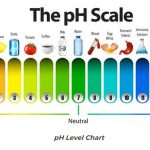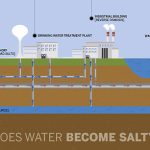The need for pH adjustment or neutralization of the water depends on the water source, the species farmed and the production system (e.g. water reuse system).
The principle used to adjust pH in acid water is to remove the free H+ ions. Methods must therefore attract and bind the H+ ions and will therefore involve basic solutions. The pH is usually regulated to between 6.5 and 7 either by adding hydroxides (OH−) or carbonate compounds. Examples of the hydroxide group include lye, sodium hydroxide (NaOH), calcium hydroxide or slaked lime (Ca(OH)2) and magnesium hydroxide (Mg(OH)2). Carbonate compounds include different forms of lime (calcium carbonate (CaCO3) and quick lime (CaO)), in addition to dolomite (CaMg(CO3)2, magnesium carbonate (MgCO3), sodium carbonate (Na2CO3) and sodium bicarbonate (Na2HCO3). Where there are problems with aluminium silica lye has also been used with advantage to reduce the acute toxicity.11,12 Silica (SiO2) will attract labile aluminium and prevent the occurrence of long Al chains and creation of mixed zones.
If carbonate compounds are used there will, in addition to the increase in pH, be an increase in the buffering capacity of the water, i.e. an increase in the alkalinity of the water, which will then be more stable against pH drops. If adding lye complexes this effect will be minor but the pH will increase; it can, however, be simple to overdose with lye so the pH gets too high. The pHmust beadjustedbefore thewater reaches the fish tanks. Normally there will be a need for some retention time so that the adjustment agents can function and to prevent unstable toxic metal complexes reaching the fish tank (mixed zone problems). Treatment at the start of the fish farm inlet pipe or using a holding tank to retain the water for some time after adding the pH treatment can solve this agent problem. The solubility and rate of solution will also depend on the chemical chosen; for example, sodium bicarbonate will react quickly, while dolomite reacts more slowly.
It is also important to achieve good mixing of the pH treatment agent with the incoming water; some kind of mixing equipment is quite normal and can, for instance, be a mixer, use of air bubbles or by addition of the chemical before pumping. The form of the pH agent (liquid, meal, powder or larger grain or rock) will dictate the requirements for the mixing equipment.
In a fish tank there will be an increase in the CO2 concentration resulting from the fish metabolism. If the fish density is high compared to the water supply and pure oxygen is supplied in addition, the reduction in pH may be noticeable. When adding pH regulating agents to the water, care must be taken because the water will also contain ammonia that is toxic for the fish, the amount of which is pH dependent; decreasing the pH will reduce the amount of dissolved ammonia. If the pH is adjusted without doing anything to reduce the concentration of ammonia, fatalities may result.



Comments are closed